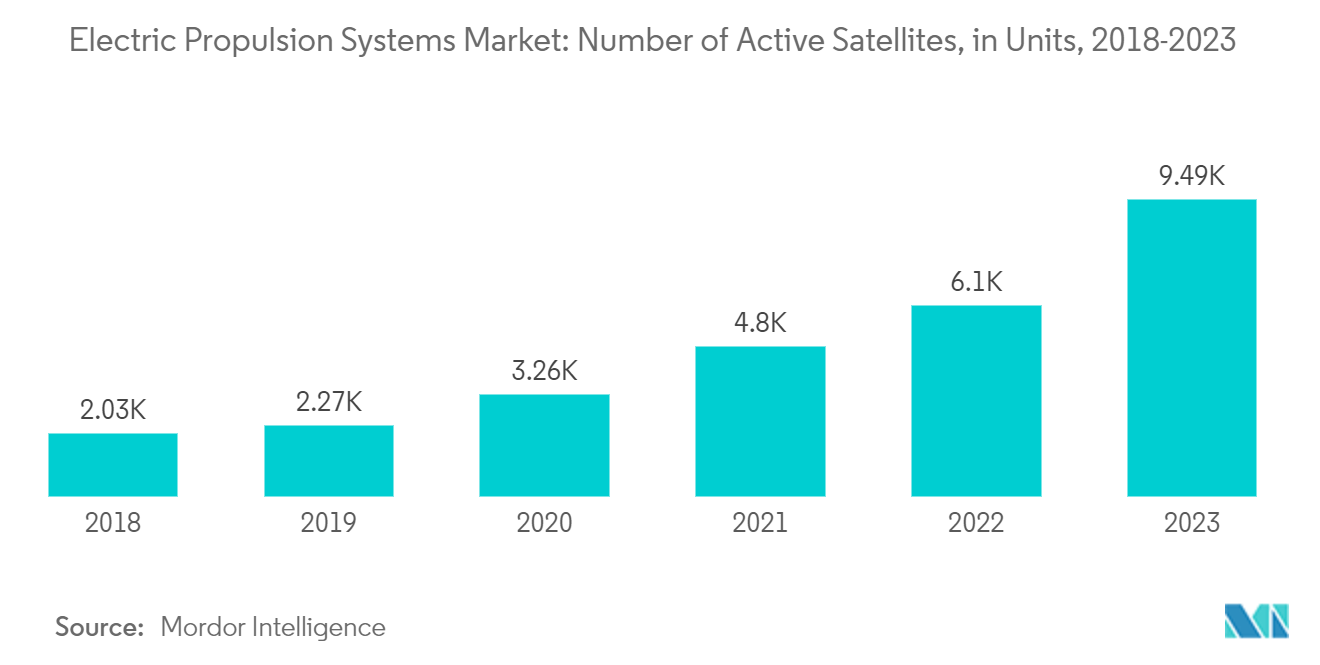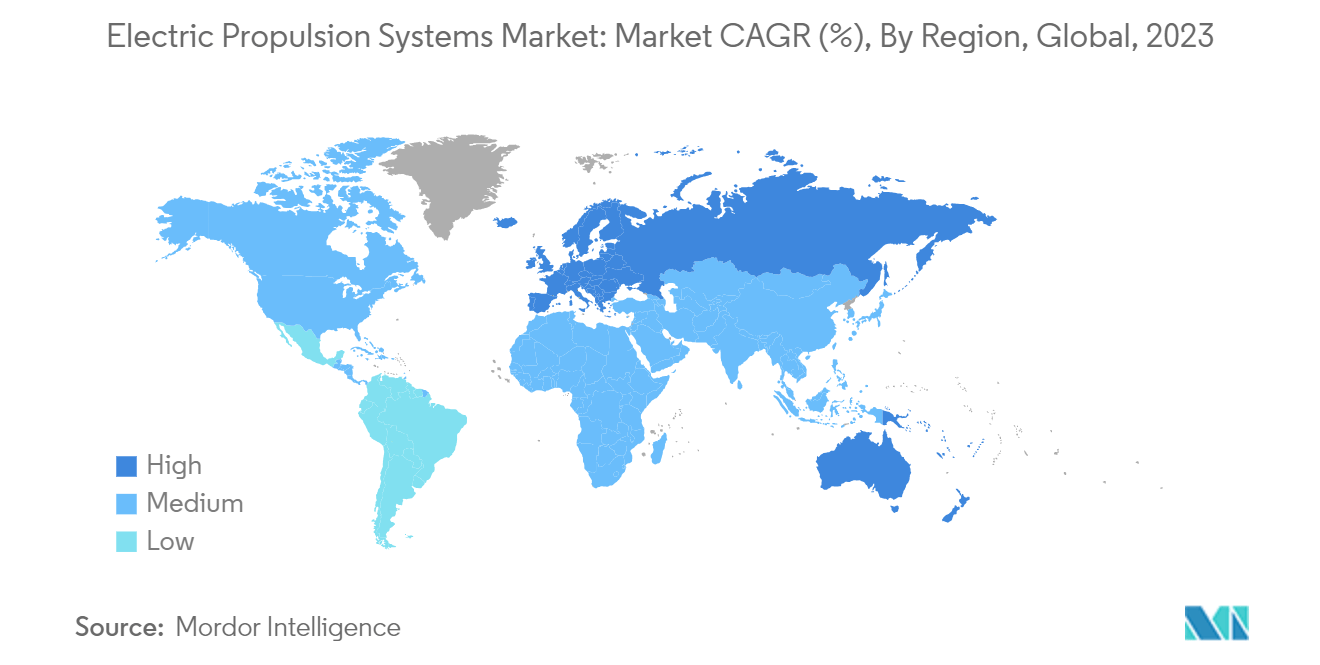Market Trends of Electric Propulsion Systems Industry
Space Segment Envisioned to Experience Highest Growth During the Forecast Period
Adopting and diffusing new technologies, such as satellites, can help disseminate information over broad areas, enable instantaneous telecommunications, and simultaneously generate and transmit high-resolution images of specific points of interest worldwide. The advent of miniaturized electronics and the increasing use of smart manufacturing materials have resulted in small satellites with shorter development cycles and lower deployment costs. The physical limitations of such satellites encourage the development and integration of powerful yet compatible electric propulsion systems to perform orbital correction maneuvers effectively.
Several contracts are being awarded for the ongoing space missions. Strategic collaborations are underway to capitalize on joint capabilities to address an evolving market opportunity. For instance, in June 2022, Astra, a US-based space vehicle company, launched Astra Spacecraft Engine with a Krypton/Xenon propulsion system. The Astra Spacecraft Engine (ASE) is an electric propulsion system for constellations using a Hall-effect thruster propulsion system that has been flight-tested. Such developments are anticipated to drive the business prospects of the players in the market during the forecast period.

Europe to Experience Fastest Growth During the Forecast Period
According to the European Commission, airplane emissions currently account for about 3% of total EU greenhouse gas emissions and about 4% of world greenhouse gas emissions. The European Commission envisions attaining an ambitious goal of reducing greenhouse emissions to 40% below their 1990 levels by 2030 and 80% of 1990 emissions by 2050. Since electrification is a viable solution for reducing greenhouse emissions, the region has emerged as a hotbed for developing electric aircraft, electric automotive, and marine vessels and their related technologies. Significant research works in electric aviation are carried out in Europe, as the region is home to several leading electric aircraft manufacturers. Until 2010, aircraft manufacturers focused on transforming existing aircraft models by substituting IC engines with electric ones. In recent years, developments in electric propulsion have been driven by manufacturers’ efforts in urban mobility.
In Europe, maritime transport is essential in global and European trade and economy. The maritime sector has taken significant measures to alleviate its environmental impacts in recent years. Ahead of a projected increase in international shipping volumes, a new report reveals for the first time the full extent of the effects of the EU maritime transport sector on the environment and identifies challenges to achieving sustainability. Similar developments are envisioned to enhance the demand for electric propulsion systems across all platforms, thereby driving the market's growth prospects in focus during the forecast period.


